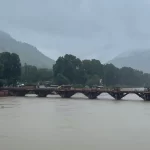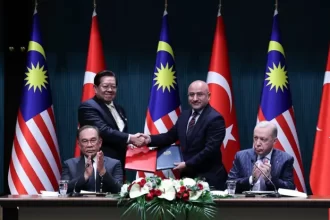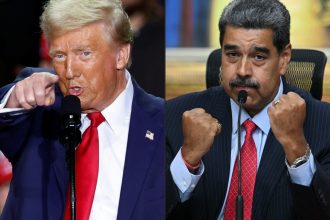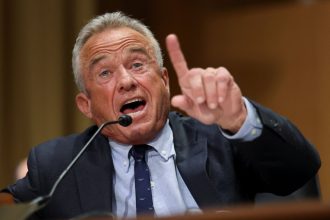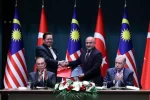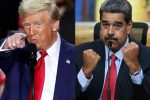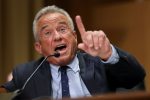BEIJING, Sept 3 – In a striking display of political unity and military power, Chinese President Xi Jinping stood shoulder to shoulder with Russian President Vladimir Putin and North Korean leader Kim Jong Un in the heart of Beijing on Monday. The rare moment, captured on the red carpet at Tiananmen Square, was not just a photo opportunity—it was a carefully choreographed signal to the world.
The occasion marked the 80th anniversary of the end of World War II, but the subtext was clear: a bold message of resistance and solidarity against perceived Western dominance.
With Putin to his right and Kim to his left, Xi led the trio in a quiet yet potent demonstration of geopolitical alignment. Cameras captured the leaders engaging in brief conversations before the start of a massive 90-minute military parade—an event filled with symbolism and spectacle.
A Parade Like No Other
From an open-top limousine, Xi inspected rows of troops and cutting-edge military hardware. Tanks rumbled down Chang’an Avenue, jet fighters streaked across the sky in a stunning “80” formation, and a host of China’s latest weaponry—including its newest intercontinental ballistic missile, the DF-5C with a staggering 20,000-kilometre range—took center stage.
Also on display: supersonic missiles, underwater drones, and battalions of soldiers marching with clockwork precision. It was military theatre at its grandest—and its most intentional.
Xi’s opening remarks were heavy with implication: “The world is still faced with a choice of peace or war.” He reminded listeners that China’s rise is “unstoppable.”
Global Reactions and a Week of Diplomacy
Former U.S. President Donald Trump responded sharply via Truth Social, claiming the trio were “conspiring against the United States.” His comment captured what many in the West are increasingly anxious about: a strengthening axis between Beijing, Moscow, and Pyongyang.
This grand parade was the climax of a whirlwind diplomatic week for Xi, who had already hosted the Shanghai Cooperation Organisation (SCO) summit—bringing together leaders from 10 Eurasian nations to discuss a more Eastern-centric model of international cooperation.
During the summit, Xi decried “bullying behaviour” from unnamed countries, while Putin used the platform to justify Russia’s war in Ukraine. The gathering emphasized an emerging narrative: a world order less reliant on the West, more focused on mutual sovereignty and regional strength.
A Rare Appearance by Kim
What made the parade even more remarkable was the presence of Kim Jong Un. He rarely travels abroad and had not been seen in such close company with both Xi and Putin before. His attendance—alongside his daughter Kim Ju Ae and sister Kim Yo Jong—sent a powerful internal message to North Koreans and a broader one to the global community: Pyongyang is not isolated; it has allies who count.
Later, Putin and Kim met privately, with Putin reportedly thanking Kim for North Korea’s military support in Ukraine—another clear sign of deepening ties.
The Bigger Picture
As thousands gathered to watch the flyover and parade, Beijing itself became a fortress. Roads were closed, soldiers patrolled key sites, and barriers lined the avenues. The city was transformed into a stage for geopolitical theatre.
Dr. Lam Peng Er, a research fellow from the East Asian Institute at the National University of Singapore, noted, “Kim’s visit demonstrates that he has powerful Russian and Chinese friends who treat him with respect. And China proves it has the political influence to bring Putin and Kim together under one roof.”
Final Thoughts
What unfolded in Beijing wasn’t just a celebration of history—it was a snapshot of where global alliances are heading. As the West grapples with internal challenges and shifting dynamics, Xi, Putin, and Kim stood together with a message: the balance of global power is evolving—and they plan to shape it.


